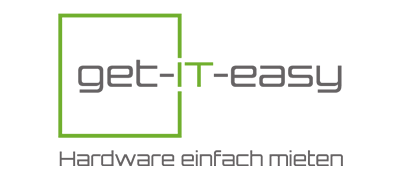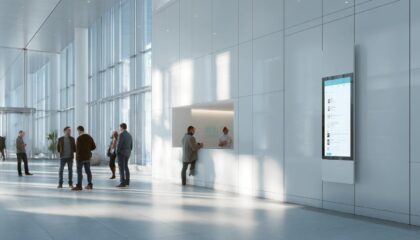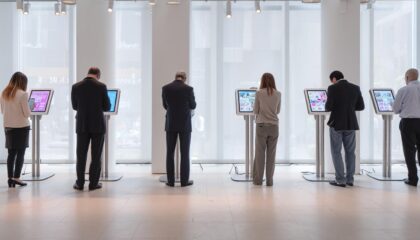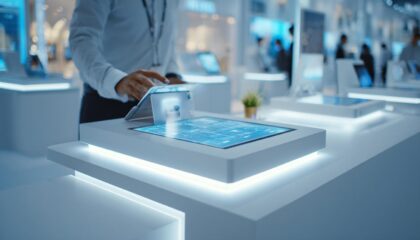Rental solutions for companies
VR glasses – what do you need? Renting the right hardware instead of buying it
VR glasses – What do you really need to get started in virtual reality?
Virtual reality (VR) has long been more than just a buzzword from the gaming scene. VR technologies are opening up completely new possibilities for training, presentations, product development and architectural visualizations, especially in the B2B sector. Companies can use customized applications to inspire customers, train employees and reduce costs. But before getting started, the key question often arises: “VR glasses – what do you actually need?”
In this blog post, we explain in detail what companies need to use VR sensibly and efficiently. We offer an overview of the technical requirements, areas of application and various VR headsets – and provide practical tips for the purchase or rental of VR glasses and suitable equipment.
VR technology in the company: Opening up new opportunities
The technology behind virtual reality has developed rapidly in recent years. Modern VR goggles and tracking systems now offer an immersive experience with high resolution, precise motion capture and extensive software support. The areas of application for companies today extend far beyond the entertainment industry:
- Training and e-learning: Interactive training in a realistic environment.
- Architecture and construction: Inspection of 3D models before construction.
- Product development: Testing prototypes and simulations effectively.
- Presentations and sales: Presenting products in an immersive space.
- Healthcare: Rehabilitation measures, diagnostics and surgical simulations.
However, in order to implement these applications sensibly, a number of prerequisites must be met – both in terms of the hardware and the infrastructure in the company.
VR glasses – what do you really need?
VR glasses alone are not enough for a complete experience. Depending on the intended use, additional components are required. The following table provides an overview of the basic equipment and additional options:
| Component | Description | Example/Recommendation |
|---|---|---|
| VR Glasses (Headset) | Core component for displaying the VR experience in 3D. | Meta Quest 2, HTC Vive Pro 2, Pico 4 Enterprise |
| Tracking System | Detects position and movement in space. | Inside-Out Tracking (integrated) or external sensors like with Vive Pro. |
| Controller | Control via hand movements or buttons. | Oculus Touch, Vive Controller. |
| Powerful PC* | Necessary for PC-bound glasses (e.g., with SteamVR apps). | Gaming PCs with NVIDIA RTX 3060 or higher. |
| Software/Platform | VR applications, training programs, or industry apps. | Unity applications, Autodesk VR, Microsoft Mesh. |
| Accessories | Headstrap, face cushion, VR gloves, case. | Individual depending on user comfort and application. |
* standalone VR glasses such as the Pico 4 Enterprise or Meta Quest 3 do not require an external computer.
Standalone vs. PC-connected VR glasses: Which variant suits your needs?
Before purchasing, you should consider which type of VR glasses are suitable for the planned use. A basic distinction is made between:
Standalone VR glasses
- Integrated processor and battery – no additional PC required.
- Mobile use possible, wireless.
- Easy to get started, easy to set up.
- Examples: Meta Quest 2, Pico 4 Enterprise, HTC Vive Focus 3
PC-connected VR glasses
- Better graphics performance with an external high-end PC.
- For complex applications and realistic environments.
- Tracking via satellites (e.g. Lighthouse system).
- Examples: HTC Vive Pro 2, Valve Index, Varjo XR-3.
Standalone versions are suitable for trade fairs and mobile training. PC-connected systems are the better choice for demanding simulations and design projects.
VR in the B2B environment – why rental often makes more sense than buying
VR technology is developing rapidly. New models such as the Meta Quest 3 regularly come onto the market with improved display quality or enhanced functions. Investing in expensive hardware therefore carries the risk of becoming obsolete after a short time.
This is precisely why the rental of VR glasses in the B2B sector is an attractive option. Always use the latest technology and remain flexible – whether for training courses, presentations or temporary projects.
Get free advice now and rent VR equipment: Contact us here or use our inquiry form!
Read more - You may also be interested in
Would you like to delve deeper into the topic or discover similar content? Below, we have compiled three additional articles for you that are thematically related to this article. These may also be relevant and interesting for your company.







